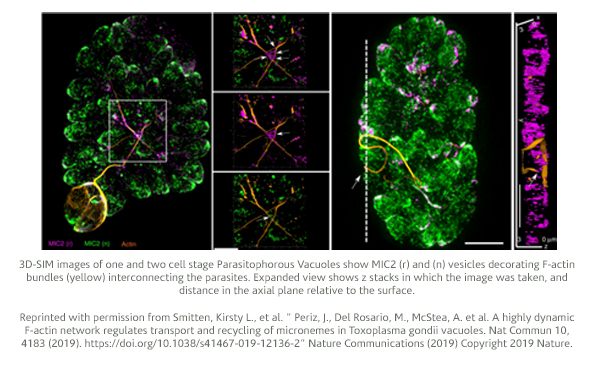On the 16th of June 2020 OCTOPUS facility celebrated its 10th Anniversary.
10 years ago a group with a catchy name was born and since then played an important role as a National UK imaging facility. Small team soon started growing in new members, of which many are still working together and keep on delivering innovative science.
OCTOPUS is housed in the Research Complex building on Rutherford Appleton Laboratory site, where it thrives to this day and we are very happy to announce that there is more to celebrate! On 9th July 2010 Research Complex officially opened its doors for the first time to enable research across the life and physical sciences. Happy 10th Anniversary from OCTOPUS team!

Please see below some of the amazing research and discoveries that have been made using
OCTOPUS facility over the years.
Don't miss beautiful image of the OCTOPUS cluster at the bottom of the post!
CLF in collaboration with University of Leeds created these incredible 3D images revealing defects inside crystals. Being able to see this could allow crystals used in areas in industry such as thermoelectrics, optoelectronics, catalysis and paints to be improved.
For full article please see link: https://tinyurl.com/y7ahv4m5

Using TIRF imaging and Optical Trapping (which is essentially a tractor beam) CLF & University of Bristol have begun to pave the way towards rapid assembly of cylindrical block copolymer micelles. Potential applications range from biomedicine to catalysts &more!
For full article please see link: tinyurl.com/ybsknmbd

Using TIRF imaging on Octopus, University of Leeds and CLF scientists were able to show that it is possible to control photo-luminescent properties of cheap, non-toxic materials which naturally luminesce at room-temp.
For full article please see link: tinyurl.com/y8nc43mo

CLF together with University of Bristol & University of Toronto discovered how to make far more complex patterns out of self-assembling materials than what would naturally occur; without a template to aid the positioning of multiple materials - thus opening up new areas of material design!
For full article please see link: tinyurl.com/ycdud2fb

The CLF and King's College London made a discovery that changed our current understanding of epidermal growth factor receptor (EGFR) autoinhibition, crucial to halt the development of tumour cells. Following on from this research, we used super-resolution and single particle tracking (as used in the previous paper) to understand the elusive structure of key parts of EGFRs.
For articles please see: tinyurl.com/y9qgtjdb & tinyurl.com/y8yn4u2s


A previously unknown sugar modification of proteins was discovered by BOKU, University of Natural Resources and Life Sciences, Vienna and the CLF. Utilising this could potentially lead to plants that are more robust to changing environmental conditions, thus securing global crop production.
For full article please see link: tinyurl.com/y7pjay8q

Scientists from University of Sheffield & CLF used super-resolution microscopy to see how pathogenic (disease-causing) bacteria take up drug candidate molecules. This will help in the search for new antibiotics to treat super-strains of drug-resistant bacteria.
For full article please see link: https:tinyurl.com/ycpjexxq
CLF, University of Glasgow & TU Muenchen studied a parasite that causes a disease called toxoplasmosis which only reproduces in cats but can infect almost any warm blooded animal & can control their behaviour! The work is a step towards finding a cure.
For full article please see link: tinyurl.com/y8uq53ox

Once again, Happy Birthday to OCTOPUS and many more years providing exceptional science!

Interpretation of OCTOPUS work in one picture. Credit: Helen Towrie.
*** Thread on Twitter is available under this link: https://twitter.com/CLF_STFC/status/1272822347758698496 ***
